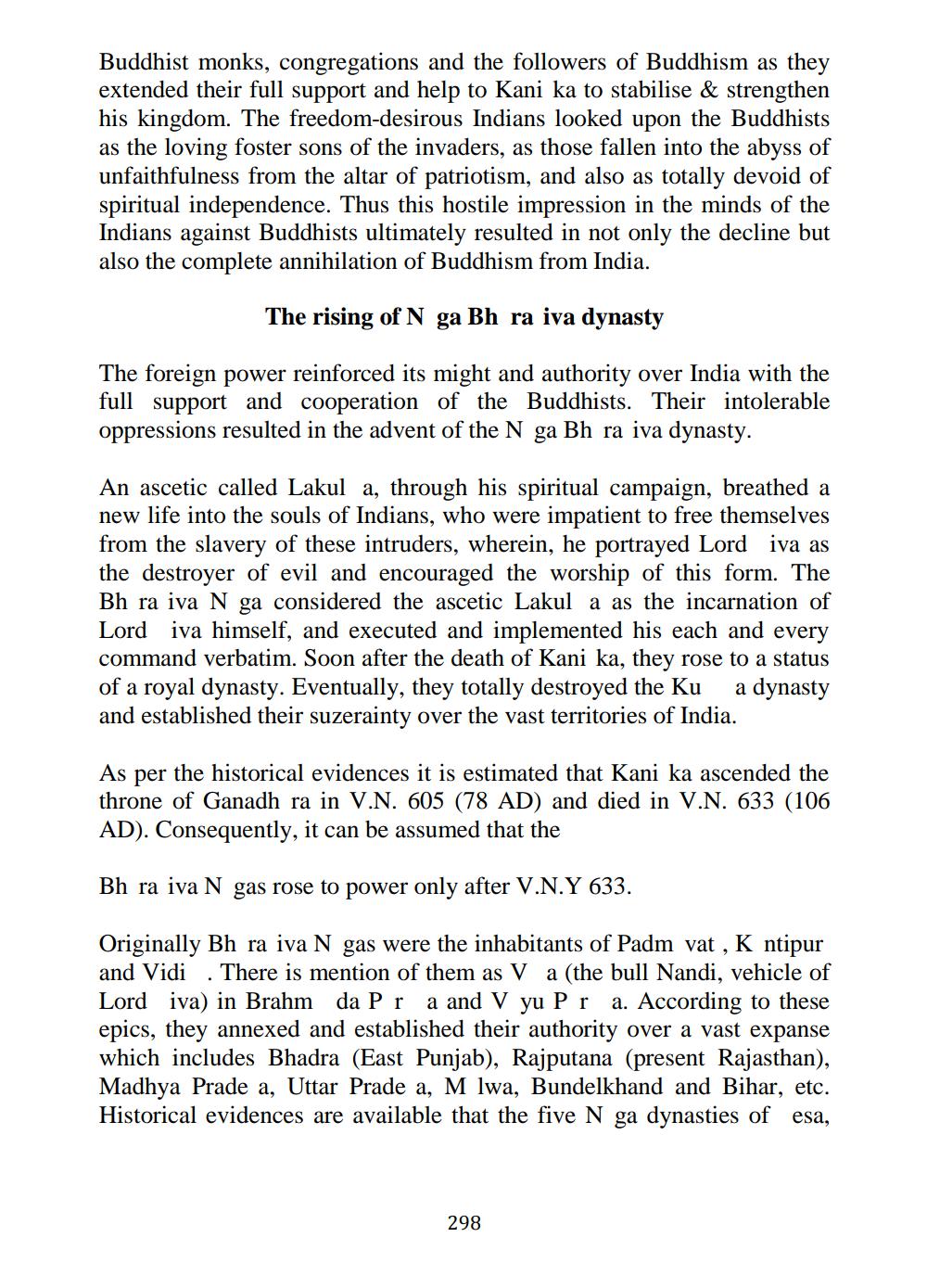________________
Buddhist monks, congregations and the followers of Buddhism as they extended their full support and help to Kani ka to stabilise & strengthen his kingdom. The freedom-desirous Indians looked upon the Buddhists as the loving foster sons of the invaders, as those fallen into the abyss of unfaithfulness from the altar of patriotism, and also as totally devoid of spiritual independence. Thus this hostile impression in the minds of the Indians against Buddhists ultimately resulted in not only the decline but also the complete annihilation of Buddhism from India.
The rising of N ga Bh ra iva dynasty
The foreign power reinforced its might and authority over India with the full support and cooperation of the Buddhists. Their intolerable oppressions resulted in the advent of the N ga Bh ra iva dynasty.
ul a, through his spiritual campaign, breathed a new life into the souls of Indians, who were impatient to free themselves from the slavery of these intruders, wherein, he portrayed Lord iva as the destroyer of evil and encouraged the worship of this form. The Bh ra iva N ga considered the ascetic Lakul a as the incarnation of Lord iva himself, and executed and implemented his each and every command verbatim. Soon after the death of Kani ka, they rose to a status of a royal dynasty. Eventually, they totally destroyed the Ku a dynasty and established their suzerainty over the vast territories of India.
As per the historical evidences it is estimated that Kani ka ascended the throne of Ganadh ra in V.N. 605 (78 AD) and died in V.N. 633 (106 AD). Consequently, it can be assumed that the
Bh ra iva N gas rose to power only after V.N.Y 633.
Originally Bh ra iva N gas were the inhabitants of Padm vat , K ntipur and Vidi . There is mention of them as V a (the bull Nandi, vehicle of Lord iva) in Brahm da Pra and V yu P r a. According to these epics, they annexed and established their authority over a vast expanse which includes Bhadra (East Punjab), Rajputana (present Rajasthan), Madhya Prade a, Uttar Prade a, Mlwa, Bundelkhand and Bihar, etc. Historical evidences are available that the five N ga dynasties of esa,
298




